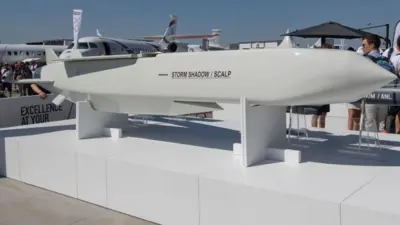We've updated our Privacy and Cookies Policy
We've made some important changes to our Privacy and Cookies Policy and we want you to know what this means for you and your data.
Chinese Shenzhou craft launches on key space mission
- Author, Jonathan Amos
- Role, Science correspondent, ґуПуґ«ГЅ News
China has taken the next step in its quest to become a major space power with the launch of the unmanned Shenzhou 8 vehicle.
The spacecraft rode a Long March 2F rocket into orbit where it will attempt to rendezvous and dock with the Tiangong-1 lab, launched in September.
It would be the first time China has joined two space vehicles together.
The capability is required if the country is to carry through its plan to build a space station by about 2020.
The Long March carrier rocket lifted away from the Jiuquan spaceport in the Gobi Desert at 05:58, Tuesday (21:58 GMT Monday). TV cameras relayed the ascent to orbit.
Shenzhou separated from the rocket's upper-stage about nine minutes into the flight. Confirmation that its solar panels had been deployed was received a short while after.
It will be a couple of days before Shenzhou is in a position to attempt the docking, which will occur some 340km above the Earth.
The vehicles will be using radar and optical sensors to compute their proximity to each other and guide their final approach and contact.
The pair will then spend 12 days circling the globe together before moving apart and attempting a re-docking. Finally, Shenzhou 8 will detach and its return capsule will head back to Earth.
This will allow experiments carried into orbit to be recovered for analysis. The German space agency has supplied an experimental box containing fish, plants, worms, bacteria and even human cancer cells for a series of biological studies.
- Tiangong-1 was launched in September on a Long March 2F rocket
- The unmanned laboratory unit was put in a 350km-high orbit
- Shenzhou 8 will try to rendezvous and dock with Tiangong-1
- The project will test key technologies such as life-support systems
- China aims to start building a 60-tonne space station by about 2020
Assuming the venture goes well, two manned missions (Shenzhou 9 and 10) are likely to try to make similar dockings in 2012.
Chinese astronauts - yuhangyuans - are expected to live aboard the conjoined vehicles for up to two weeks. There is speculation in the Chinese media that one of these missions could also include the country's first female yuhangyuan.
The 10.5m-long Tiangong-1 module was launched on 29 September and has been operating well, according to Chinese officials.
Its orbit has been lowered slightly and the vehicle turned 180 degrees in preparation for its upcoming union with Shenzhou 8.
Beijing sees the Tiangong and Shenzhou dockings as the next phase in its step-by-step approach to acquiring the skills of human spaceflight operations.
It is a learning curve China hopes will eventually lead to the construction of a space station, starting at the end of the decade.
At about 60 tonnes in mass, this future station would be considerably smaller than the 400-tonne international platform operated by the US, Russia, Europe, Canada and Japan, but its mere presence in the sky would nonetheless represent a remarkable achievement.
Concept drawings describe a core module weighing some 20-22 tonnes, flanked by two slightly smaller laboratory vessels.
Officials say it would be supplied by freighters in exactly the same way that robotic cargo ships keep the International Space Station (ISS) today stocked with fuel, food, water, air, and spare parts.
China is investing billions of dollars in its space programme. It has a strong space science effort under way, with two orbiting satellites having already been launched to the Moon and a third mission expected to put a rover on the lunar surface.
Next week should see its first Mars orbiter - Yinghuo-1 - begin its journey to the Red Planet.
The Asian country is also deploying its own satellite-navigation system known as BeiDou-Compass.
Bigger rockets are coming, too. The Long March 5 will be capable of putting more than 20 tonnes in a low-Earth orbit. This lifting muscle, again, will be necessary for the construction of a space station.
<link> <caption>Jonathan.Amos-INTERNET@bbc.co.uk</caption> <url href="mailto:Jonathan.Amos-INTERNET@bbc.co.uk" platform="highweb"/> </link>
Top Stories
More to explore
Most read
Content is not available








